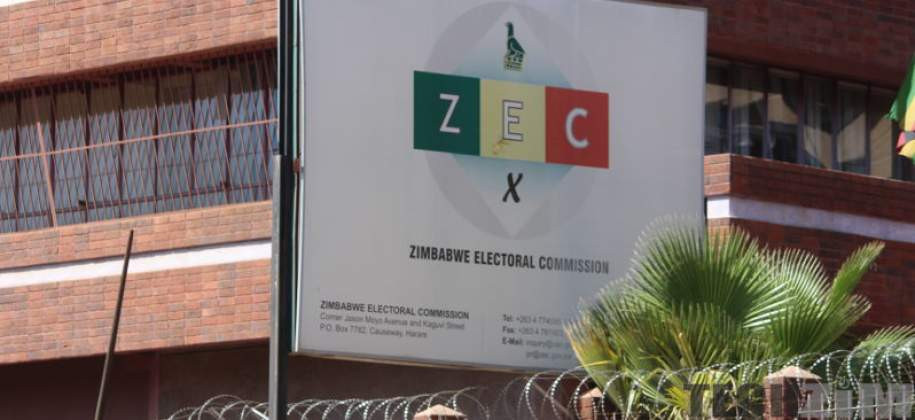
In a world where multilateral institutions are often accused of advancing the interests of powerful nations at the expense of weaker economies, Zimbabwe has long felt the chill of global scepticism. From sanctions to high interest loans, the country’s path to recovery has been stalked by the perception that few in the international arena genuinely have its back. Yet, in a rare alignment of principle and compassion, the United Nations (UN) has openly pushed back against a debt resolution path that traps Zimbabwe in deeper hardship.In this candid exchange, our senior reporter Freeman Makopa (FM) speaks to Sirak Gebrehiwot (SG, pictured), the UN’s Partnerships and Development Finance Advisor at the UN Resident Coordinator’s Office in Zimbabwe, on how the organisation is framing debt, investment, and development to ensure the country’s recovery does not come at the cost of its people. Here is how the interaction turned out:
FM: Global development financing faces a US$4 trillion annual shortfall. What is the UN’s strategy? And how does this relate to Zimbabwe?
SG: The UN has facilitated the high level Fourth International Conference on Financing for Development, bringing together Heads of State and Government and High Representatives in Sevilla, Spain, from June 30 to July 3, 2025. This was meant to renew the global financing for development framework, building on the 2015 Addis Ababa Action Agenda.
Here in Zimbabwe, the UN’s strategic engagement is guided by the 2022–2026 Zimbabwe UN Sustainable Development Cooperation Framework with a total multi-year funding framework of US$2,8 billion. By the end of 2024, the third year of implementation, the UN had delivered programmes and projects worth US$1,5 billion under four SDG pillars: people, planet, prosperity, and peace. While delivering on its five-year commitment to support Zimbabwe’s SDG progress, the UN has begun consultations to roll out a new cooperation framework in 2027. This will align with the 10 priority areas in the Government of Zimbabwe’s ongoing National Development Strategy II (formulation) for 2026–2030, in line with the SDG deadline.
FM: How will this be implemented?
SG: The new generation of the UN cooperation framework will fully reflect the Sevilla outcome document on development financing. A key component is promoting policy frameworks and incentives that attract private investment aligned with SDGs. We also aim to strengthen domestic financial sectors by enhancing savings bases and reinforcing banking systems. This includes creating public and private capital markets and domestic investment vehicles. Innovative financial instruments — such as SDG bonds, social and green bonds, and sustainability linked bonds — will be supported by strong regulatory frameworks.
Risk management is also critical, including comprehensive insurance markets for smallholder farmers, cooperatives, and MSMEs.
FM: This sounds like a comprehensive plan for Zimbabwe. How can risks like drought be handled in terms of insurance?
- Mavhunga puts DeMbare into Chibuku quarterfinals
- Bulls to charge into Zimbabwe gold stocks
- Ndiraya concerned as goals dry up
- Letters: How solar power is transforming African farms
Keep Reading
SG: We have seen the benefit of risk insurance during the El Niño induced drought in Zimbabwe, when the government, the UN, and a consortium of NGOs, supported by development partners, secured a US$32 million pay-out from Africa Risk Insurance.
Inclusive, development-oriented policies are encouraged to promote entrepreneurship and help micro, small, and medium enterprises formalise and grow. We also emphasise reducing remittance costs to below 3% by 2030 and promoting digital remittance solutions.
FM: Tell us about the UN’s work in agriculture in Zimbabwe.
SG: The Irrigation Development Project, supported by concessional loans, has delivered year round farming, boosted yields, and improved incomes. Such loans carry low interest rates and clear repayment milestones to ensure sustainability.
FM: Can you cite a specific case where innovative financing under a UN framework has successfully unlocked private equity or venture capital in a developing economy?
SG: A strong example is Zimbabwe’s Renewable Energy Fund — ZimREF — supported by the UN SDG Joint Fund. It mobilises over US$100 million through blended finance, with US$10 million in catalytic funding. Finance Minister Mthuli Ncube announced at FfD4 in Sevilla that Zimbabwe has granted prescribed asset status to ZimREF investors, unlocking more capital. This model can be replicated in other sectors and countries, showing how private investment can align with sustainable development.
FM: What has been the UN’s role in Zimbabwe’s ongoing debt resolution strategy?
SG: In the structured dialogue on debt and arrears resolution, the UN has been a consistent advocate to ensure any agreement does not compromise delivery of social and public services.
FM: How are you doing this?
SG: UN agencies have been part of the three agreed sectoral reforms — economic, governance, and land tenure — working with the government and creditors to ensure reforms unlock development finance concessions without harming critical services.
Since late 2024, the government has begun paying compensation to former farmers, and notable progress has been made in implementing economic and governance matrices, despite some challenges.
FM: Tell us about foreign direct investment (FDI).
SG: Sustained FDI in developing countries is encouraged by addressing regulatory hurdles and offering incentives and guarantees that align with sustainable development plans. The aim is to create an enabling environment for private investment, mobilise additional resources, and align financial incentives with long term sustainable development goals.
FM: In relation to South-South cooperation, tell us about the UN’s interventions in Zimbabwe.
SG: Agencies such as World Food Programme, United Nations Development Programme (UNDP) and United Nations Conference on Trade and Development (UNCTAD) have been supporting Zimbabwe under South-South and triangular cooperation in infrastructure, community asset building, renewable energy, and e-trade and e-regulation to ease business, trade, and investment.
FM: International investors often cite political and regulatory risk as deterrents. How is the UN addressing this in Zimbabwe?
SG: This year, UNCTAD supported Zimbabwe in launching the e-Trade Readiness Assessment, the National Productive Capacities Gap Assessment, and the Holistic Productive Capacities Development Programme.
This is our commitment to support evidence-based policymaking, capacity building, and multilateral cooperation. The spearheading of these reports reflects a multi-layered approach to economic rejuvenation, where digital innovations meet traditional industrial strategies. The National Productive Capacities Gap Assessment, with its candid evaluation, addresses systemic inefficiencies, while the Holistic Productive Capacities Development Programme provides a strategic framework with its five pillar approach targeting human capital, infrastructure, economic diversification, governance, and environmental sustainability.
Similarly, the UN supported the government this year with the launch of the SDG portal to systematically track SDG progress. These initiatives support evidence based policy-making, capacity building, and multilateral cooperation. They combine digital innovation with traditional industrial strategies, addressing systemic inefficiencies while strengthening governance, infrastructure, and environmental sustainability.
The World Trade Organisation also works to make trade policies more transparent, resolve disputes, and lower barriers. Agencies such as UNDP, UNIDO, UNCDF, and International Labour Organisation support reforms in governance, industrial development, financial inclusion, and workforce skills.
We also back the African Continental Free Trade Area by providing technical advice, capacity building, and infrastructure development to boost intra Africa FDI. Over the past three years, under the 2022–2026 Cooperation Framework, we have implemented 12 joint programmes (in Zimbabwe).
These include the Idai recovery initiative, providing antiretroviral drugs to over one million people, installing solar power in 1 050 health facilities, and supporting survivors of gender based violence through one-stop centres serving over six million women and girls.
FM: Tell us about the concept of domestic resource mobilisation in Zimbabwe. What is the UN’s position?
SG: Balancing development financing with debt sustainability requires investment in growth driving sectors such as sustainable infrastructure, healthcare, education, and technology. Strengthening domestic resource mobilisation through improved tax systems and tackling illicit financial flows is equally vital. We stress multilateral cooperation among financial institutions, creditor nations, and debtor countries to promote fair debt restructuring and equitable burden-sharing, ensuring Global South countries can develop without falling into unsustainable debt cycles.









